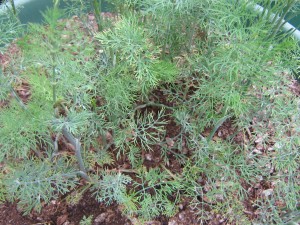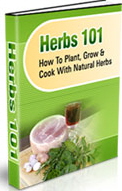Dill
 Dill fresh from the garden is wonderful to use, so you can cut it fresh as needed during the growing season. If you don’t keep it cut back, it will begin to go to seed, so keep it cut back until you are ready for seed production to begin.
Dill fresh from the garden is wonderful to use, so you can cut it fresh as needed during the growing season. If you don’t keep it cut back, it will begin to go to seed, so keep it cut back until you are ready for seed production to begin.
If this provides you with excess dill, you can spread it on a paper towel in a single layer and microwave it for 3 minutes. You can then take the leaves and crumble them and keep them stored in an airtight container. Once you are ready to let the dill go to seed, let the seed heads form and dry and then you can cut them and store them until the next spring when you are ready to plant again.
Growing Dill
Dill can be grown either in an outdoor garden or in pots. Additionally, you can easily start dill from seeds, or you can purchase pre-started plants form a local nursery. Dill is easy to start from seeds, and should grow well in a variety of conditions.
Dill should be started in cool weather, and can be planted close to or before the last frost. This herb generally likes direct sun, but can tolerate afternoon shade if planted in a partially shaded location. Dill can grow to 3 feet tall, so it may be beneficial to plant the seeds close together so the plants can provide support for one another. Generally, sowing the seeds 2 inches apart is preferred.
If planting in pots, choose a deep pot due to the deep root structure that Dill generally grows. Plants should be placed in a location with plenty of sunshine throughout the day.
Dill is generally resistant to drought, but should be watered twice daily. The plants should grow well even if you live in a dry climate. However, dill generally prefers cool weather. Be careful not to disturb the plant. The roots of the Dill plant tend to be fragile, and moving or transplanting the plant will often cause it to go to seed. If you think you may need to move the plants, plant them in a pot instead of directly in the ground.
Harvesting Dill
Fresh dill may be harvested at any point, but the younger leaves produce a better flavor. If planted early in the season, Dill will be ready to harvest in mid-summer just before the flowers bloom.
Fresh dill may be stored by drying or freezing for future use. If drying, make sure to dry quickly using a dehydrator to prevent moisture damage from the leaves. If freezing, make sure the bag is sealed very tightly. Frozen dill may be stored for up to 6 months in the freezer.
Click here for additional reading and recipes.

